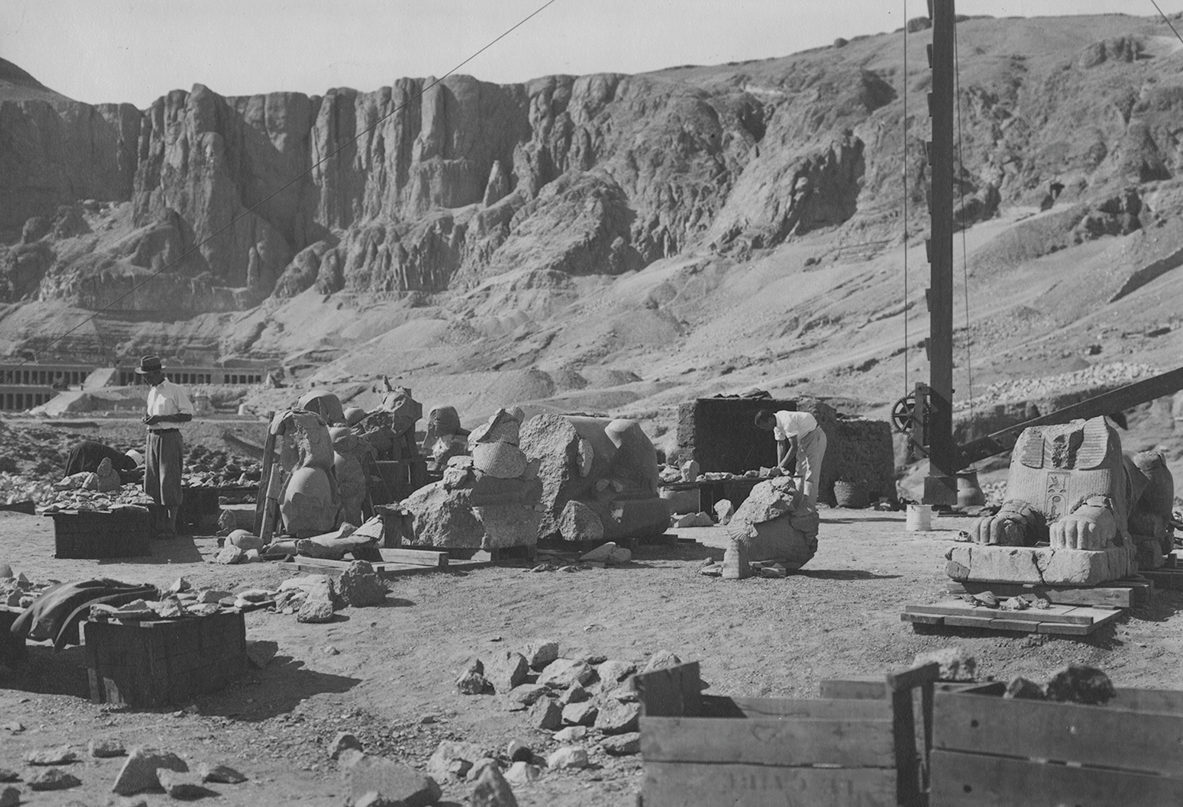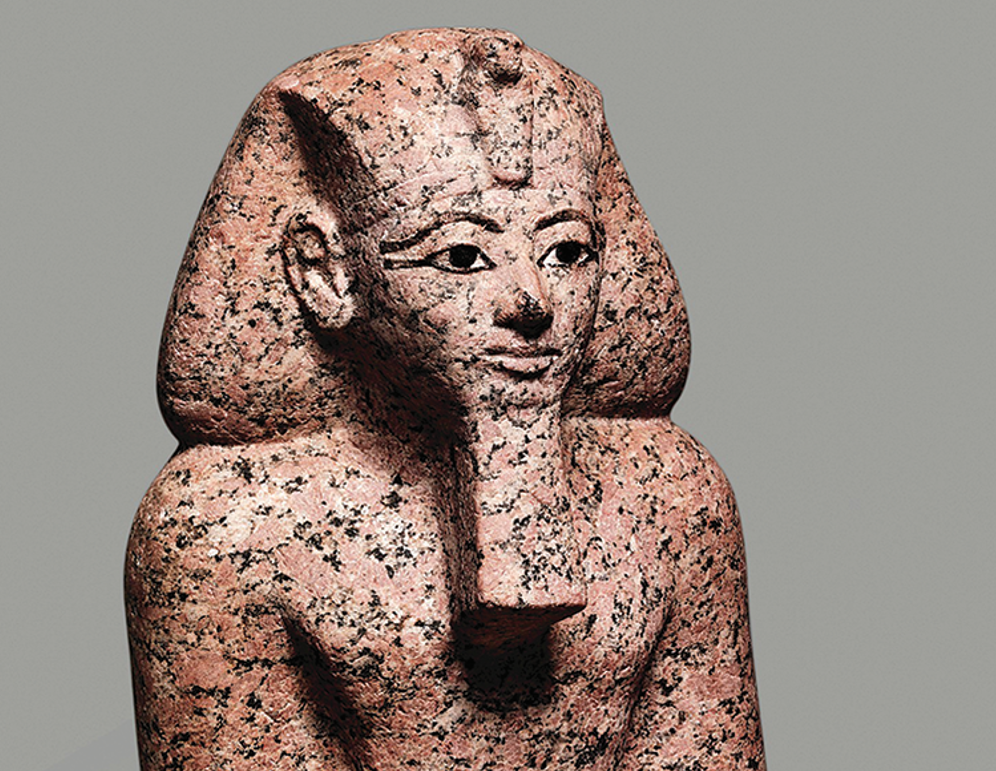When Egyptologists excavated the site of Deir el-Bahri in Luxor in the 1920s, they were shocked to find that the statues of Hatshepsut, a revered female pharaoh, were defaced and shattered into pieces. This was no accident, nor an act of mindless vandalism; it was as if someone were trying to actively remove her image from history.
Hatshepsut ruled the Eighteenth Dynasty of Egypt between 1479 to 1458 BCE during a period of prosperity and peace. In modern assessments, her grade-A pharaohship has landed her a legacy of being an outstanding ruler and arguably one of the first “great women” in recorded history.
However, this is a relatively new interpretation. Many of her contemporaries attempted to tarnish her reputation by erasing her monuments and excluding her from the historical record.
The finger is often pointed at her nephew and successor, Thutmose III. Numerous broken statues of Hatshepsut were discovered beneath a causeway constructed during his reign, implying they were deliberately buried under his orders.
Researchers crafted a narrative suggesting that Thutmose harbored a deep resentment toward Hatshepsut and defaced her monuments out of vengeance. They also claimed that he needed to secure his own line of succession, one that Hatshepsut’s legacy may have threatened to overshadow or complicate.
However, recent evidence is starting to show the story might be more complex than previously thought. In a recent study, an ancient historian at the University of Toronto points out that some monuments of Hatshepsut were not necessarily ruined in an act of malice under the orders of Thutmose III.

Reassembling the statue fragments of Hatshepsut in the 1920s.
Image credit: Photograph by Harry Burton, 1929 (© The Metropolitan Museum of Art, Department of Egyptian Art Archives [M10C 58])
Using photographs and field notes from the original excavations in the 1920s, author Jun Yi Wong argues that many statues remained relatively untouched during the reign of Thutmose III. The idea that he ordered the total annihilation of Hatshepsut’s image doesn’t totally hold up.
“While the ‘shattered visage’ of Hatshepsut has come to dominate the popular perception, such an image does not reflect the treatment of her statuary to its full extent. Many of her statues survive in relatively good condition, with their faces virtually intact,” Wong said in an emailed statement.
It’s also apparent that many of the statues were broken down for use as building materials in later periods. It might have been thoughtless and disrespectful, but the erasure of Hatshepsut wasn’t the sole motive.
Furthermore, the statues damaged during Thutmose’s reign appear to have been deliberately broken at their structural weak points, namely the neck, waist, and knees. This targeted destruction suggests they were subjected to a form of “ritual deactivation,” Wong says.

Did you miss one, Thutmose III? A small kneeling statue of Hatshepsut with its face fully intact.
Image credit: © The Metropolitan Museum of Art
In the ancient Egyptian worldview, the images of powerful rulers were believed to possess an inherent, almost magical energy. Before a statue could be discarded, destroyed, or repurposed, this energy had to be ritually neutralized to symbolically sever its power.
“In other words, this treatment does not necessarily denote hostility towards the depicted individual,” added Wong.
“For a long time, it has been assumed that Hatshepsut’s statuary sustained a vindictive attack by Thutmose III. However, careful ‘re-excavation’ of the archives indicates that this is not the case, and various other agents have contributed to the destruction of these objects,” Wong explained.
That said, it’s clearly evident that the legacy of Hatshepsut was targeted by political rivals after her death; the new study simply highlights that the story may have more nuance than is commonly appreciated.
While the destruction of some statues may have been motivated by practical or ritualistic concerns, it could be suggested that personal or political resentment may have eased the conscience of those involved.
“Unlike the other rulers, Hatshepsut did suffer a programme of persecution, and its wider political implications cannot be overstated. Yet, there is room for a more nuanced understanding of Thutmose III’s actions, which were perhaps driven by ritual necessity rather than outright antipathy,” concludes Wong.
The study is published in the journal Antiquity.
Source Link: Rivals Wanted To Erase This Great Female Pharaoh From History, But Is That The Whole Story?